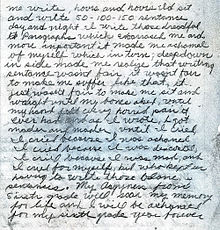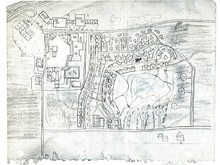4/28/2018
Was Stokely Carmichael an agent of Russian influence? If so, the media never stated it.
visiting Guinea, North Vietnam, China, and Cuba.
fbi file: https://archive.org/stream/FBI-Stokely-Carmichael/100-HQ-446080_djvu.txt
A shared “tricontinental” vision that promoted unity in the Global South against imperialism, capitalism, and racism facilitated Carmichael’s solidarity with Castro. Yet divergent views on the role of race in fighting oppression limited their solidarity. Carmichael and Castro’s spectacular alliance demonstrated their personal affinity and ideological commonalities but did not result in an institutional alliance between the black liberation movement and the Cuban state
On "ameri-cong" list of visitors to Hanoi http://blog.vvfh.org/tag/anti-american/
Propaganda Tokyo Rose broadcast from Hanoi
http://www.aavw.org/protest/carmichael_carmichael_abstract26.html
"Hanoi in English to American Servicemen in South Vietnam."
"Hanoi in English to American Servicemen in South Vietnam." 1305 GMT 29 OCT 67 B
(Text) Have colored GI's the right to say no to this war? Well-known leader of colored Americans Stokely Carmichael himself has this to say to the colored GI's who are fighting in South Vietnam. Here is Mr. Carmichael's voice. (Transcribed voice follows—Ed).
The white man and Uncle Toms say that we are unpatriotic when we refuse to fight in the United States (word indistinct). To be patriotic means that you are willing to fight for (? your) country. But maybe the black men ain't got no country, ain't got no kind of country, when the United States was patriotic and writing all its beautiful words about life, liberty, and the pursuit of happiness, they were making us slaves. The very Constitution of the United States today says that we are (several words indistinct).
Where is our country? To be patriotic means you have something to fight for. What country do we have? Where is our country? Voting—we couldn't vote until 1965 OneNineSixFive by paper (as heard). In Louisiana, Mississippi, (Texas), South Carolina, Georgia, Alabama, North Carolina, Virginia, and we can't even vote in Washington D.C. today because we outnumber them. What is a country when a man can't vote? And we have to pay to vote. Can you vote in Mississippi? Can you vote in Alabama? Can you vote in Louisiana? Georgia? Texas? North Carolina? South Carolina? Virginia? Tennessee? No! Kentucky? No! You can't vote. If you can't vote, what are you fighting for? How can you be patriotic when you have nothing to be patriotic to?
But the white man says we are unpatriotic because we don't want to fight in his wars. When you fight in a war, to the victors belong the spoils. The United States has won every war it has fought in. What have the black people benefited from its wars? Nothing. The United States is the richest country in the world. We are probably the poorest people in the world. What are we fighting for? Where is our country? The white man calls us nigger whenever he feels like it, spits in our face, shoots us down in the street and goes all unpunished. In the South, Sheriff Rainey can shoot us (words indistinct); Jim Clark can beat us up; Wallace, Lurleen and George, can take their (words indistinct). They don't even come to trial.
The white man in the South shoots a nigger, he don't even come to trial. In the North it's a little bit better. The white man puts on a badge and if he shoots us down he goes to court, and they call it justifiable homicide. Now, who they kidding? What is the country been fighting for? Where is the property we own in the United States? We are a property-less people, and yet the white man says we are unpatriotic. (Sentence indistinct). He says things are getting better in the United States every day. It's a lie! It's a lie! And nothing is getting better.
White men take a black man from the United States (? ten thousand) 10,000 miles to Vietnam, put him in uniform up front, fighting, gets killed (as heard). Let's say he is fighting next to a white boy. Let's say both of them may get out of the war alive. What do they do back home? Can a black man live next to a white man? Hell no! Hell no! We fought in Congress three weeks and (several words indistinct). Some bill claiming that black people can't live where they want to live. Where is a country where you can't live where you want to live. What kind of country do you have?
We ain't got no country. Our country is our color! Our country is our color! We must defend our people wherever we are. Our enemy is not the Vietnamese. They have done absolutely nothing to us. No Vietnamese ever called me nigger. No Vietnamese ever lynched my people. No Vietnamese ever exploited my people. No Vietnamese ever discriminated against me, made me sit in the back of a bus. No Vietnamese ever stopped me from voting. No Vietnamese ever raped my mother. No Vietnamese made my mother or my sister a prostitute. What the hell is a nigger doing in Vietnam? 291300 Steiner AC 29/163SZ OCT
https://en.wikipedia.org/wiki/Stokely_Carmichael
He also continued as a strong critic of the Vietnam War, and imperialism in general. During this period he traveled and lectured extensively throughout the world; visiting Guinea, North Vietnam, China, and Cuba.
In August 1967, a Cuban government magazine reported that Carmichael met with Fidel Castro for three days and called it "the most educational, most interesting, and the best apprenticeship of [my] public life." Because relations with Cuba were prohibited at the time, after his return to the US, the government withdrew his passport. In December 1967, he traveled to France to attend an antiwar rally. There, he was detained by police and ordered to leave the next day, but government officials eventually intervened and allowed him to stay.[53]
Ture and Cuba's president Fidel Castro were mutual admirers, sharing a common opposition to imperialism. In Ture's final letter, he wrote:
After his diagnosis of prostate cancer in 1996, Ture was treated for a period in Cuba, while receiving some support from the Nation of Islam.[79]Views on Adolf Hitler[edit]
Although he stated in his posthumously published memoirs that he had never been anti-semitic, in 1970 Carmichael proclaimed: "I have never admired a white man, but the greatest of them, to my mind, was Hitler."[89] However, Carmichael in the same speech condemned Hitler on moral grounds, Carmichael himself stating:
https://ratical.org/ratville/JFK/Spying-Linked-CarmichaelToCC.html
Spying linked Carmichael to Chinese, Cuba
By Stephen G. Tompkins
The Commercial Appeal, Memphis Tennessee
Sunday, March 21, 1993 pp. A7
Carmichael was in Havana to attend meetings of the Organization of Latin American Solidarity. “These (OLAS) are radical Communist revolutionaries who advocate militant and coordinated guerrilla warfare throughout the Americas,” according to an analysis of the meeting based on CIA reports.
In January 1968, as King was drumming up support for his planned march on Washington. Carmichael was in Hanoi, the capital of North Vietnam. In February, he met with King in Washington. King was killed two months later in Memphis.
Stokely Carmichael - Civil Rights Activist - Biography
https://www.biography.com/people/stokely-carmichael-9238629
Jan 19, 2018 In 1967, Carmichael took a transformative journey, traveling outside the United States to visit with [communist] revolutionary leaders in Cuba, North Vietnam, China and Guinea. Upon his return to the United States, he left the SNCC and became prime minister of the more radical Black Panthers.
Interview with Stokley Carmichael
digital.wustl.edu/e/eii/eiiweb/car5427.0967.029stokleycarmichael.html
STOKELY CARMICHAEL: Well, they invited him, number one because, ah, SNCC took a trip to Africa in 1964, invited by President Sekou Toure incidentally of Guinea, and, ah, from Guinea, the SNCC ..... Thus, my task inside of SNCC politically was to put pressure on King to make him take a stand on the war inVietnam.
Tricontinental Routes of Solidarity: Stokely Carmichael ... - eScholarship
https://escholarship.org/uc/item/0wp587sj
by S Seidman - 2012 - Cited by 12 - Related articlesStokely Carmichael’s visit to Cuba for three weeks in the summer of 1967 illustrates a convergence in the transnational routes of the African American freedom struggle and the Cuban Revolution. African American activists saw Cuba as a model for resisting US power, eradicating racism, and enacting societal change, while the Cuban government considered African Americans allies against US imperialism and advocates of Cuba’s antiracist stance. Amidst racial violence in the United States and Cuba’s efforts to inspire revolution, Carmichael’s presence at the Organization of Latin American Solidarity conference in Havana—and in particular his interactions with Fidel Castro—caused ripples worldwide. A shared “tricontinental” vision that promoted unity in the Global South against imperialism, capitalism, and racism facilitated Carmichael’s solidarity with Castro. Yet divergent views on the role of race in fighting oppression limited their solidarity. Carmichael and Castro’s spectacular alliance demonstrated their personal affinity and ideological commonalities but did not result in an institutional alliance between the black liberation movement and the Cuban state. Instead Carmichael’s connection with the Cuban Revolution left an underexplored legacy. Examining Carmichael’s visit to Cuba illustrates the possibilities and pitfalls of transnational solidarity and furthers our understanding of postwar struggles for change.
he gave a speech there: Speech of the U.S. Representative, Stokely Carmichael : at the First Conference of Latin American Solidarity (OLAS) : July 31-Aug. 10, 1967 byStokely Carmichael( Book ) We greet you as comrades because it becomes increasingly clear to us each day that we share with you a common struggle; we have a common enemy
HABANA 1967 | News | The Harvard Crimson
www.thecrimson.com/article/1967/11/17/habana-1967-pway-at-the-top/
This was OLAS, the first conference of the Organization of Latin American Solidarity. And it is likely that what went on in the Habana Libre hotel last summer will prove a good deal more important than the scanty notice the events received in the U.S. press. The American newspapers wrote mainly about Stokely Carmichael, ...who was introduced to 400,000 people at the beginning of Fidel's 26th of July speech as "one of the most distinguished pro-civil rights leaders in the United States."But Carmichael gave them the message, calmly, softly, as he worked out an internationalist justification for Black Power. He talked about the "young bloods" like himself who have moved beyond the civil rights movement:
"It is the 'young bloods' who contain especially the hatred Che Guevara speaks of when he says: 'Hatred is an element of the struggle, relentless hatred of the enemy that impels us over and beyond the natural limitations of man, and transforms us into effective, violent, selected and cold killing machines.'
"We are moving to control our African-American communities, as you are moving to wrest control of your countries, of the entire Latin continent, from the hands of foreign imperialist powers."
The Organization of Latin American Solidarity is dedicated to severing root and branch every trace of United States domination in the hemisphere--political, economic and cultural. The men who met in Havana last summer called it the liberation of Latin America from Yankee imperialism, and the program they finally wound up with was just as blunt and fiery as the language they used.
How can you coordinate the work of the traditional Communist parties in Latin America with the work of guerrillas in overturning the social structure of these countries?
wikipedia Organization of Solidarity with the People of Asia, Africa and Latin America [communist] Cuban political movement with the stated purpose of fighting globalisation, imperialism, neoliberalism and defending human rights. It publishes the magazine Tricontinental. The OSPAAAL was founded in Havana in January 1966, after the Tricontinental Conference, a meeting of leftistdelegates from Guinea, the Congo, South Africa, Angola, Vietnam, Syria, North Korea, the Palestine Liberation Organization, Cuba, Puerto Rico, Chile and the Dominican Republic. One of the main purposes of the organisation is to promote the causes of socialism and communism in the Third World; for example, OSPAAAL strongly supported Hugo Chávez.[citation needed]
Mexican agents uncovered in May 1967 a plot led by Javier Fuentes Gutierrez, head of the Mexican Communist Party, to establish a “socialist regime” within Mexico.
Gutierrez and his cohorts were financed by Hsinhua, the Chinese Communist Press Agency, which Mexican Intelligence discovered was a front for the Chinese Ministry of State Security, China’s CIA.
Gutierrez’s followers already had dynamited a Mexican Army truck and were seeking rifles and mortars from arms dealers.
Gutierrez also was a top organizer of the Havana-based Organization of Latin American Solidarity (OLAS) — another group that received secret Chinese funding.
exican troops raided the Chiapas camp and snatched a large cache of automatic rifles, grenades and machineguns.
According to still classified Army Intelligence files, the AK-47 rifles eventually were traced from gunrunner Kenneth G. Burnstine of Miami to gun dealer Mitchell Livingston WerBell of Atlanta, a former OSS agent who ran his own paramilitary training camp on a 60-acre farm in Powder Springs, Ga.
Mitchell WerBell III - Wikipedia Mitchell Livingston WerBell III (1918–1983) was an OSS operative, mercenary, paramilitary trainer, firearms engineer, and arms dealer.
Mitchell Livingston WerBell; Anti-Communist Arms Dealer - The New York Times .Dec 18, 1983 - Mitchell Livingston WerBell 3d, soldier of fortune, former international arms dealer and former operator of a counterterrorist training school near Atlanta
werBell also had key contacts throughout the Caribbean. Carmichael was photographed talking to one of those contacts — Marti Tellez — in the Havana Libre Hotel on July 27. Tellez, a former Haitian army captain, flew contraband for Burnstine’s Miami-based Florida Atlantic Airlines. Stokely Carmichael was in Havana to attend meetings of the Organization of Latin American Solidarity. “These (OLAS) are radical Communist revolutionaries who advocate militant and coordinated guerrilla warfare throughout the Americas,” according to an analysis of the meeting based on CIA reports.
A Cuban agent working for the CIA took the picture, and a report on the meeting was forwarded to Army Intelligence.











